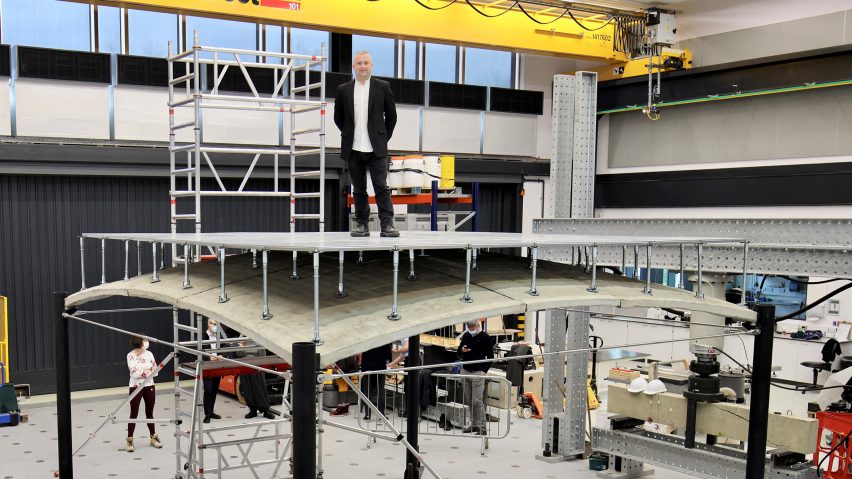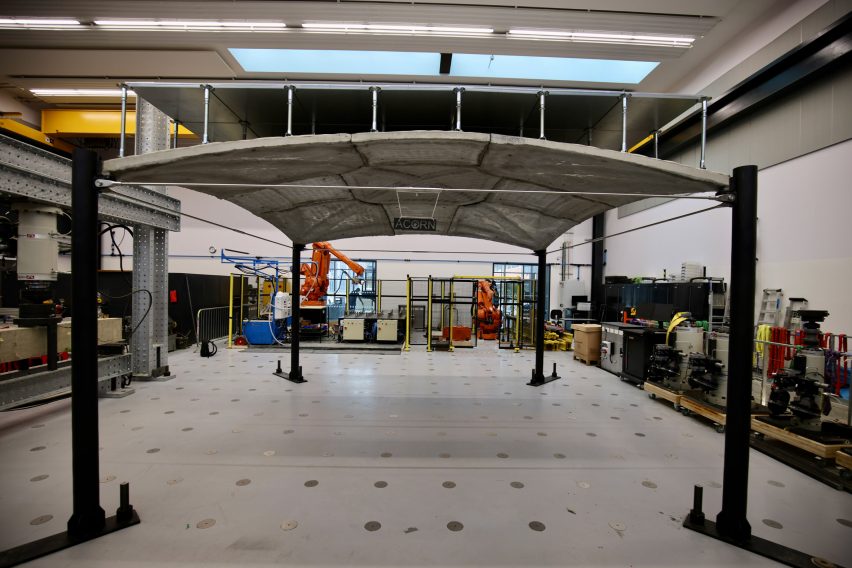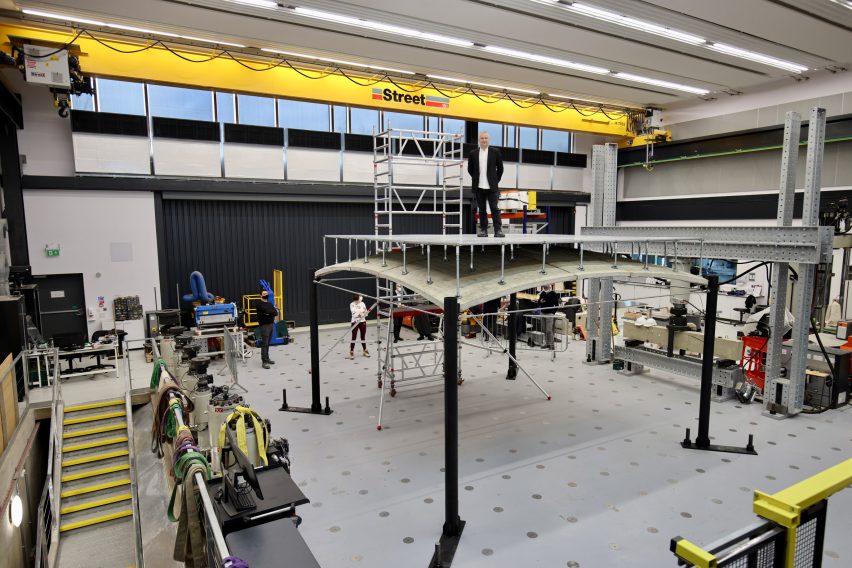
New concrete vaulted floor suggests path to cutting carbon emissions
A type of flooring that uses 75 per cent less concrete than the current standard has been invented by researchers at the universities of Bath, Cambridge and Dundee, who say it could make a "major difference" to the construction industry's carbon footprint.
The UK-based researchers from the ACORN project (the name is short for Automating Concrete Construction) use a thin-shell vaulted shape for their floor rather than a conventional solid slab – a change that requires substantially less concrete to carry the same load.
The multidisciplinary team has completed a full-scale demo of the floor, built inside a Cambridge University Civil Engineering Department facility, and hopes the innovation will be adopted by the construction industry to reduce its carbon emissions.
"Since concrete is the world's most widely consumed material after water, and its production contributes more than seven per cent of global CO2 emissions, the easiest way for construction to begin its journey to net-zero is to use less concrete," said ACORN principal investigator Paul Shepherd from Bath's Department of Architecture and Civil Engineering.
"That has been the driving force behind this project, which we hope could make a major difference to the impact of construction."
Flooring innovation makes use of concrete's strengths
As Shepherd explains, any thick flat slab flooring bends as people walk across it – and the bending strength of concrete is not very high, requiring steel reinforcement.
Conversely, concrete is good at resisting compression, which the vaulted shape takes advantage of. As people walk across the vaulted floor, the weight flows down the arch structure, squashing the concrete, which can bear the load without reinforcement.
To create a level surface, the arch shape is covered by standard raised flooring panels.

ACORN has developed a manufacturing method for its flooring, which begins with bespoke software that optimises the shape for a given building design. It then communicates with a robotic system that adjusts an adaptable mould to form the desired shape and sprays concrete into the mould in layers.
Using this method, the vaulted floors are made in a factory and then transported to the site for assembly.
"Our work builds on the shoulders of giants like Frei Otto, Heinz Isler, Candela and Nervi in that we use shell action to be hugely material efficient," Shepherd told Dezeen.
"But we have developed a means of manufacturing the shells off-site, alongside a digital system to aid their design, optimisation and fabrication, and importantly one that could be scaled up to mass production as a 'kit of parts'."
Demo shows minimum 60 per cent reduction in emissions
For ACORN's project demo, the studio manufactured the floor in nine pieces that are assembled with reversible joints, enabling future disassembly and reuse.
As well as using 75 per cent less concrete than an equivalent flat slab, ACORN calculates that the prototype achieved a carbon emissions reduction of 60 per cent. It says that the carbon savings should increase as the process becomes even more optimised.
It also counts on the manufacturing process becoming quicker in the future with the existence of specialised facilities. As it is, each of the nine pieces in the ACORN model took 30 minutes to make, and the floor took one week to assemble.
The demo floor measures 4.5 by 4.5 metres and is situated inside the NRFIS Laboratory of Cambridge University's Civil Engineering Department.
ACORN aims to reshape use of concrete in construction
The prototype was developed by an interdisciplinary team of structural engineers, mathematicians and manufacturing experts, and involved partners including engineering and construction company Laing O'Rourke.
The aim of ACORN is to improve sustainability and productivity within the construction sector, largely by tackling the problem of concrete, which it says is being used hugely inefficiently.

Currently, concrete production accounts for more than seven per cent of global greenhouse gas emissions, leading to calls for architects to stop using it.
There have been recent innovations that could help to reduce concrete's environmental impact – including an emissions-free cement production process from MIT and different formulas incorporating ingredients such as nano platelets from carrots – but they may not be usable within the window of time there is to avert catastrophic climate change.
